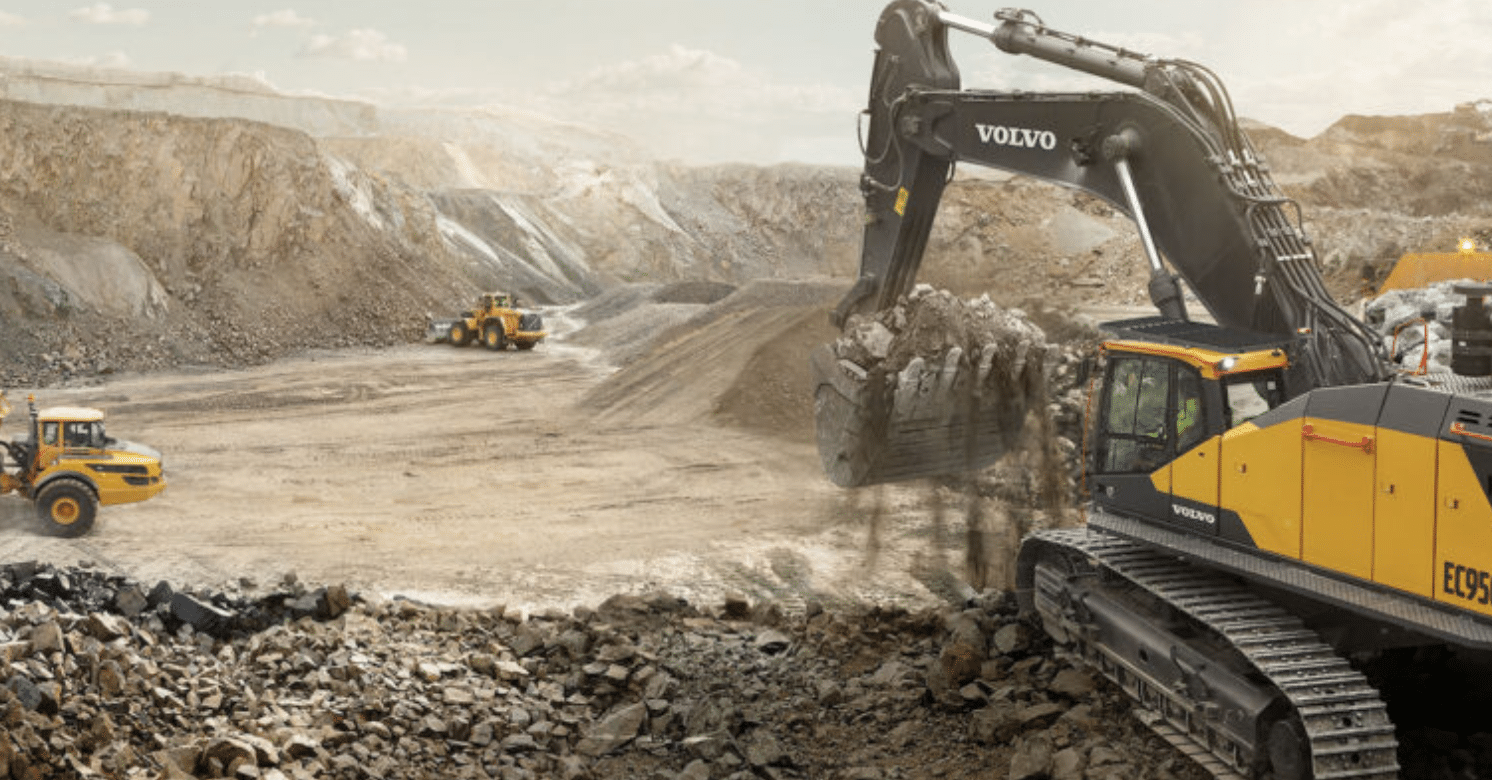
At CONEXPO 2023, Volvo Construction Equipment product experts spent time answering a wide range of questions from booth attendees and their online audience.
Take a look at these top questions and answers for each of the top Volvo CE product lines.
VOLVO EXCAVATORS & ARTICULATED HAULERS
Why are wheeled excavators a great option for use on roads?
With a wheeled excavator, operators can fold the outriggers up after working and head down the road at 23 miles an hour, set back up and continue working. That really improves daily productivity. We also offer zero-turn machines so operators can work in a closed lane of traffic without having to shut down the other lane to help keep traffic moving.
What trends are you seeing with wheeled excavators?
Europe is usually a bit ahead of North America as far as their techniques in digging — for example, they opted to use wheeled excavators well before here in the U.S. Those techniques eventually get picked up here, though, because contractors find that with a road job, you’d have to put an excavator on a trailer to move it to the other side of the job. With a wheeled excavator, you can just fold up your outriggers and drive it to the other side or even drive it into town. If a sewer backs up, as another example, you can sit there in the street and dig and dump into a truck behind you. More and more people are starting to realize that these machines are a much better option than crawler excavators and backhoes due to their versatility and mobility.
What are some of the most common questions you get related to articulated haulers?
Customers want to know more information about what the haulers are actually doing. So, working with mapping functionality to know where they are and how they’re interacting with other machines on a worksite, tire pressure monitoring to make sure the tires are all full and they’re getting the longest life out of the tires. Customers can also put notes into the Co-Pilot display and generate productivity reports — numbers are everything for customers.
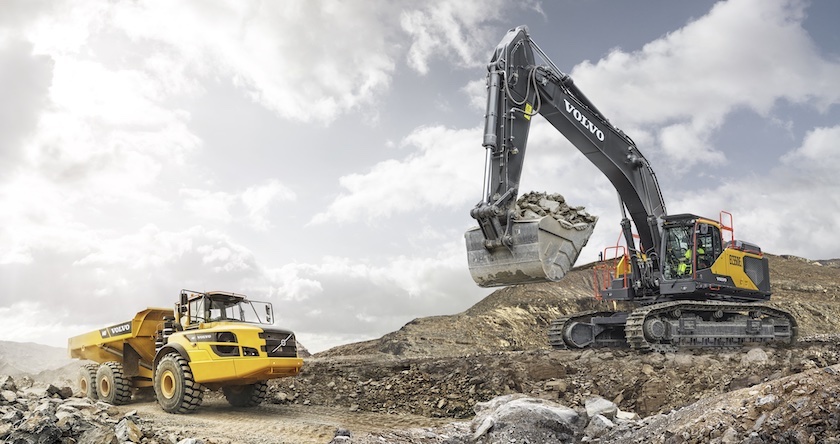
What are some of the top new productivity and efficiency improvements customers can expect from the new excavator series launched at the show?
New electric joysticks give operators even more control over the hydraulic system. The hydraulic pumps can be operated together as well as virtually disconnected, allowing an operator to control the boom without affecting track speed. This delivers safety benefits and a smoother ride. It also increases controllability, shortens cycle times and improves fuel efficiency.
As Parker Schnabel from Gold Rush put it, “Volvo articulated trucks are the best in the world.” What makes them so special?
It’s everything from the Lifetime Frame & Structure Warranty for North America on the front and rear frame and center oscillation joint to productive Volvo Co-Pilot features like tire pressure monitoring, on-board weighing, downhill speed control and cruise control. Even our popular Optishift is now available on some Volvo hauler models now. These all combine to make operators more accurate and productive throughout the day.
Does Volvo offer any tools that customers can use to better match up excavators and haulers to optimize their cycle times?
One of our most useful tools is called Volvo Site Simulation, or Site Sim. We go out to your site and conduct parameter readings, road and material densities, road profiles and so on. Next, we talk with the customer to understand what their objectives are to optimize their site. The data we collect is then put into Site Sim and we output the best-case scenario of machines to optimize cycle times, reduce or eliminate idle times, cut back on fuel consumption and things like that.
VOLVO WHEEL LOADERS
What are some of the biggest advancements you’ve seen made with wheel loaders right now?
There’s been a big focus on safety like avoiding collisions, and our new Collision Mitigation System addresses that. A lot of companies are also working to reduce the total cost of ownership, so things like our 1000-hour engine oil intervals help cut down on maintenance costs which lowers the overall operating cost of the machine over time. Low fuel consumption continues to be in high demand, and we’re constantly working on ways to cut down on fuel consumption even further.
How has Volvo made it easier for customers to select a loader built for their specific application?
A lot of customers have been impressed with our application packages. We can custom-build loaders very simply for a dealer to offer the features needed for niche applications like scrap, waste, agriculture, slag, block handling and more.
What’s the best way to select the right bucket for your loader?
In addition to our attachment catalogs, we also have a unique Attachment Selector app that customers can use to outfit a machine. They can see our offering for attachments and then basically build their machine to see all the specs, dimensions, capacities and so on. It’s an easy tool to use and get all those questions answered.
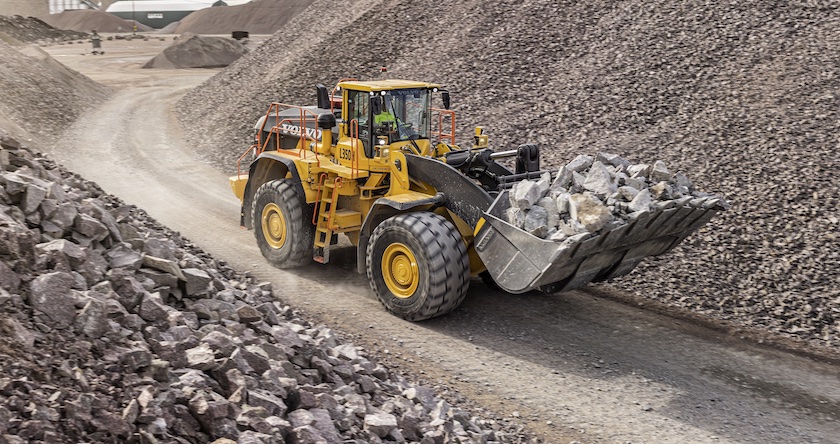
What are people saying about the new L200H High Lift Loader?
We’ve got a lot of good comments that it looks like a great machine for the logging industry, especially for applications like sawmills. And for timber yards, the high-lift arm system enables log stacks up to nearly 23 feet high which optimizes space by up to 60% compared to a conventional wheel loader with a timber grapple.
What do owners and operators think about Load Assist?
Load Assist really helps improve operator efficiency — loading trucks accurately and not having trucks come back to get more material significantly improves efficiency. Tools like Operator Coaching provide interactive feedback from the machine to the operator telling them how they’re performing, and tire pressure monitoring helps ensure you have the correct pressure and temperature in the tires. Best of all, it’s so easy to use — if you can handle a cell phone, you can handle Load Assist.
ROAD BUILDING EQUIPMENT
What technologies can help operators improve their performance?
One thing that’s big with any kind of paving job right now is intelligent compaction. Here at Volvo, we call it Compact Assist and there are different levels available for both asphalt and soil compactor models. It essentially helps the operator get real-time feedback to what they’re doing on the road. For the passes they make, it maps their progress in colors so they don’t have to guess where they stopped or started, what they’ve compacted so far and so on.
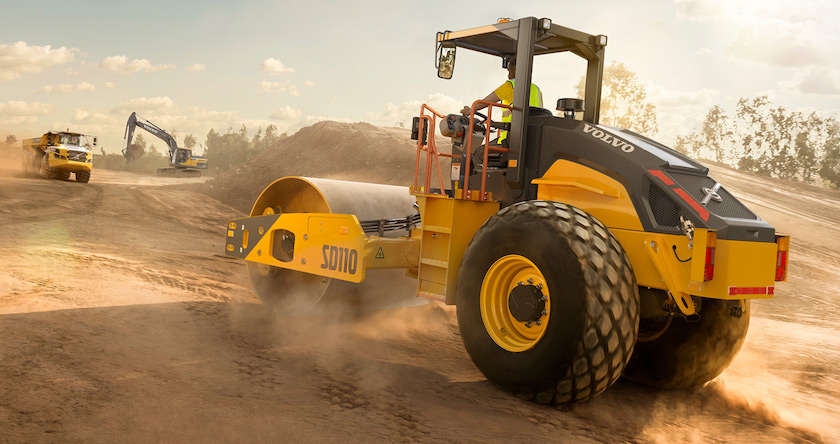
Why are wheeled excavators a good option for road projects?
Wheeled excavators have plenty of power to lift and dig — and with a zero tail swing model, it’ll spin inside of one lane of traffic, which is big. An operator can drive into town as needed, or work in place and spin around behind them and dump into a truck without having to close off the other lane of traffic. The EWR130E competes directly with a large backhoe, and the larger units (EWR150E to EW220E) compete with Gradalls and crawler excavators.
How does the DD25 Electric asphalt compactor fit into the future of road building?
This machine is one example of how we’re working toward our company’s net zero emissions goals. We also partner with organizations like the National Asphalt Pavement Association with similar goals to reduce emissions in the paving industry. It doesn’t mean we have to have all-electric machines today (or even in the coming years), but starting small today will make a big difference down the road.
VOLVO ELECTRIC MACHINES
What’s the number one question you get about electric machines?
It’s actually two questions we hear most often. First, what’s the runtime of the machine? Second, how long does it take to charge?
For runtime, it’s typically depending on the machine between four to six hours for the L20, L25 and ECR25 and six to eight hours on the ECR18 and EC18. We give a range because these machines can run very hard, or they can operate in light applications. How hard they’re used will impact how long a full charge of the traction batteries will last.
To have an optimal charging time for electric machines, it’s strongly recommended to have a 240-volt, Level 2 AC-charging setup utilizing an SAE J1772 charging adapter or J plug — the same as for electric vehicles. While you can charge the machines on a common household 120-volt network, it takes longer. We also offer a BENNING DC fast charger. The fast charger charges the 48V batteries direct with 48V DC and up to 360 amps. As a result, the charging times are drastically reduced.
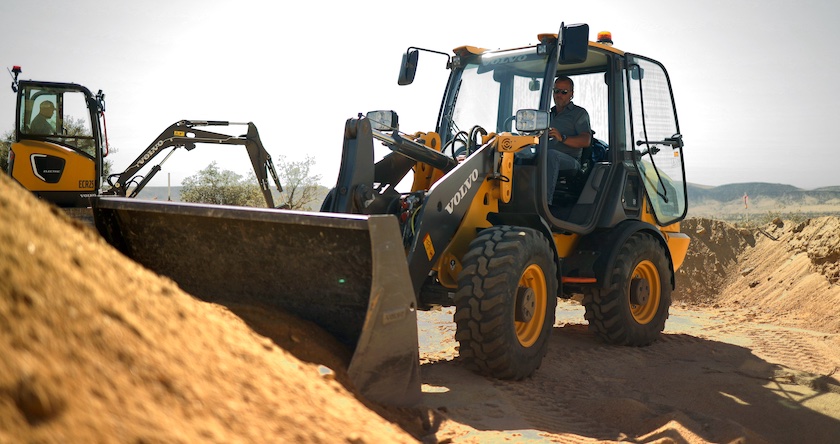
Volvo has five electric machines on the market here in North America — the new DD25 Electric compactor will make six. What have you learned from your first customers that helps drive future design considerations?
We have a lot of experience with customers and in various applications. We know very well what the runtimes and charging times are. As an example, on an electric mini excavator doing indoor demolition, opportunity charging (charging during breaks, over lunch, etc.) with a DC fast charger means you can practically run 24/7.
Are there applications or machine types where battery electric may not be the answer, at least at this time? Are there still zero emission solutions being developed?
Absolutely. There are multiple zero emission or low carbon emission solutions that we’re working on all in parallel. The advantage of hydrogen, for example, is that you don’t have the power limitations that you would with a battery. When you have very high power or very long duty cycles, you end up having a very large, very heavy, very expensive battery — and it’s on board your machine 24 hours a day. Hydrogen is the alternative we’re bringing to market, and we think it’ll be a good solution for higher power, longer duty cycle applications.
How does someone know if electric is right for them?
It really depends on the application. We’re not saying that electric is right for every application, nor for every customer today. It’s really a learning curve. You need look at where the machine will be used. As an example, there are many jobs where quiet machines are needed to limit disturbing people around you — electric equipment is ideal in that scenario. Working indoors where you can’t have emissions is another great application for electric.
What do service teams need to know about electrical equipment and maintenance?
Generally, with electric equipment, the maintenance is going to be much less, and we’re seeing that in actual deployment. Keep in mind that all maintenance around the diesel engine is gone. The other thing about maintenance you need to keep in mind is that these are electric machines — some of them have fairly high voltage. Training and safety are paramount, and we’ve been very careful to make sure that that’s embedded in all our service technicians.
Where’s all of this going?
Our goals here at Volvo are 100% quality, 100% more productive and 100% fossil free. I think that sums up where we want to go in the future. It doesn’t mean that internal combustion engines will soon go away — maybe we replace pure diesel with renewable diesels, low-carbon fuels or even hydrogen. Electric should start to make a bigger imprint on jobsites around the world. Small steps today are necessary as our industry evolves like so many others that currently utilize electric and alternatively powered vehicles.
If you have additional questions about Volvo machines, just reach out to your Nuss Volvo CE Sales Team and they can get you the answers you need.

